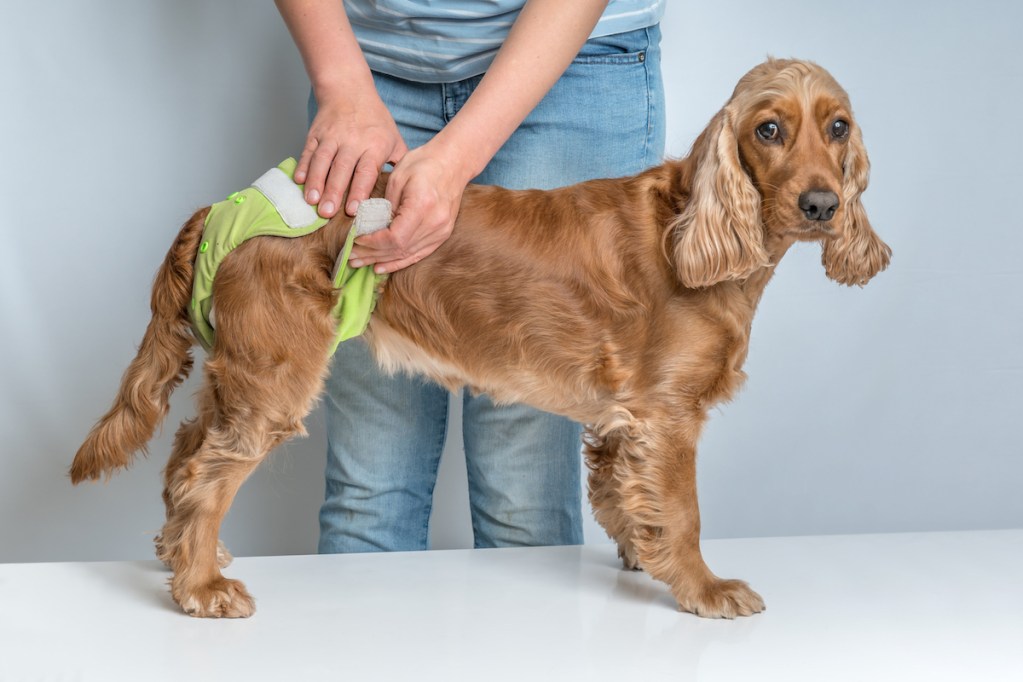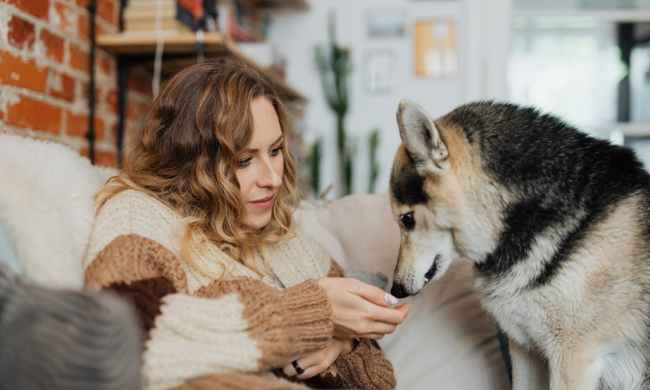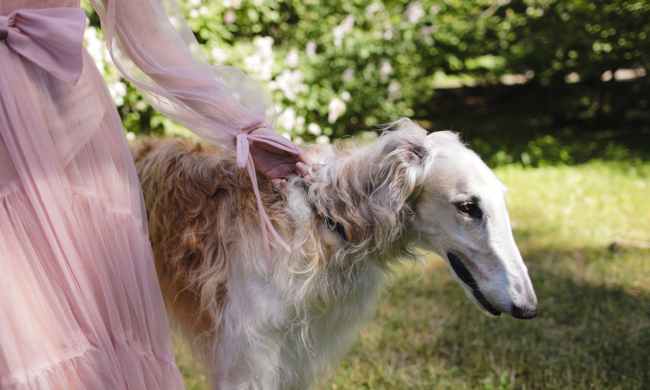Human beings share more commonalities than differences with one another, no matter where they’re from, how old they are, or what gender they are. Even so, there are a few life experiences that only females get to live through. Women around the world can commiserate about menstruation, pregnancy, and menopause — to name a few — but human females aren’t the only ones who experience these stages of life.
Do dogs have periods? Are the canine heat cycle stages similar to a woman’s menstrual cycle? Let’s dive into this important health topic so you can learn about canine health and how to support your female dog during heat. Remember, reproductive health is just as essential as any other facet of well-being, so don’t shy away from this important topic.
Do dogs have periods?

Yes! Although their periods won’t look the same as those of human women, female dogs have phases of vaginal discharge, bleeding, and hormonal changes throughout their heat cycles. It’s not exactly a “period,” nor do veterinarians call it that, but the symptoms of this stage of their cycle will sound familiar to most women.
When a dog experiences bloody vaginal discharge, she is said to be “in heat.” During this time, she is fertile and often more than willing to mate, though we will explore the stages of the heat, or estrus, cycles in more detail below.
How often do dogs have periods?
Each heat cycle in dogs typically lasts between 2 to 4 weeks, although the bleeding stage does not last for the entire duration. It’s important to remember that bleeding is just one phase of the cycle. Once the cycle is complete, you and your dog can enjoy several months of peace before it occurs again. For puppies, heat cycles happen more frequently — approximately every 4 to 6 months. As they grow into adulthood, however, the cycles will generally become less frequent, occurring every 6 to 12 months.
At what age does a female dog have her first heat?
Girl dogs will have their first heat cycle when they reach sexual maturity. The exact age at which this happens varies from dog to dog, but you can often predict when this will be based on your dog’s size. Their first heat cycle could occur anywhere between 6 months and 2 years of age.
Smaller dog breeds will reach sexual maturity sooner than large dog breeds, so a Chihuahua puppy will experience her first heat much sooner than a Great Dane puppy. Large breeds may also have a longer time between heat cycles, which means experiencing fewer of them over time.
Do dogs experience menopause?
It’s important to remember that female dogs may continue to experience heat cycles until they have been spayed. Even senior dogs may have heat cycles, though they often become less common as a dog ages. Something called “silent heat” is also more common as a dog gets older. When this occurs, a dog still experiences the hormonal changes and fertility that come with heat cycles, but does not show any outward symptoms. If your female dog stops showing signs of heat without being spayed, a visit to her veterinarian is a good call. Your dog’s veterinarian can decipher whether she’s experiencing silent heat or a health concern that results in similar symptoms.
It’s also essential to remember that pregnancy can have much more serious complications for senior dogs, so an accident can be a much bigger problem than anticipated. Senior dogs may also be more at risk for reproductive health concerns such as mammary cancers and a uterine infection called pyometria, so be sure to speak to your vet about the best time to have your dog spayed. In most cases, there is no reason to wait.
Stages of the canine heat cycle

If you’re familiar with the human menstrual cycle, the canine heat cycle will sound familiar. There are four main stages to this cycle.
Proestrus
The first stage is the one to keep an eye out for. During this stage, called proestrus, the body’s rising estrogen supply causes vaginal discharge, swelling of the vulva, and major hormonal changes. Most dogs are not yet receptive to breeding in this stage, but may start to attract attention from intact males. This stage lasts around 6 to 11 days, on average.
Estrus
During the second stage, called estrus, estrogen decreases while progesterone and luteinizing hormone increase. Now, female dogs will be receptive to breeding. Dogs ovulate during this stage, and their discharge will start to lighten in color, though this varies greatly from one dog to the next. For most dogs, this stage lasts only 5 to 9 days, but it can be as short as 1 day or as long as 20.
Diestrus
The third stage is diestrus, which occurs around 2 to 3 weeks after ovulation. The beginning of this stage is marked by an increase in progesterone, which stays elevated for about 1 to 2 weeks before slowly declining over a longer period of 1 to 4 weeks. Dogs will no longer be receptive to mating and will either be pregnant or in a “resting phase” depending on what occurred during estrus.
Anestrus
The final phase is anestrus, when hormones remain at a steady, baseline level. This is the period of time between heat cycles when the reproductive system repairs and prepares itself for the next cycle.
My dog is in heat! What do I do?

If your dog is in heat, don’t panic! This is a natural cycle, and your dog is not in distress. The best thing you can do for her is to keep her comfortable, clean, and away from intact males that may be interested in mating. Maintaining proper hygiene is the best way to help your pup avoid uncomfortable symptoms and infections, so don’t skip on dog period products and regular bathing. Even a sponge bath of the area will make a big difference.
Many female dog owners prefer canine diapers to keep their pups clean while they’re in heat. These helpful products also keep your home clean without the use of potty pads, which makes them a win-win. There are a number of disposable and washable products to try, so be patient while you go through the trial-and-error process. You’ll find what works best for you and your dog.
A little planning and preparation can help your dog stay happy and comfortable, no matter what stage of the heat cycle she’s in. You’ve got this!




